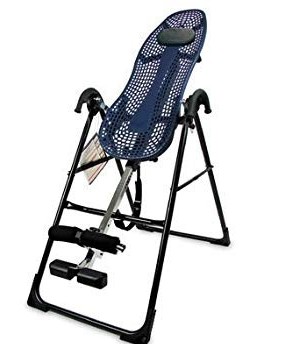WHAT IS SCIATICA?
First of all, unlike bats, lemurs and opossums, we humans do not sleep upside – down. We don’t do much of anything in an inverted position. At least, most of us don’t. Gravity, posture, age and prolonged sitting are factors in this type of back pain. So may be wearing high heels, sleeping on a soft mattress and obesity.
The sciatic nerve is the longest nerve in our bodies. It starts in the lower back and runs through our hips, buttocks, legs and feet. On both sides. Sciatica is the irritation, or exciting, of this nerve and the resulting pain.
A herniated disk is quite often the source of sciatic pain. When a disk herniates, it can put pressure on nearby nerves. If an affected nerve is the sciatic nerve, we can experience considerable pain. Spinal stenosis (narrowing) or bone spurs may also place pressure on the sciatic nerve. The most obvious sign of sciatica is the pain that radiates from our lower backs into the back or sides of our legs.
The pain can be mild or very sharp. It can flare up and be temporary or last for months. Sciatic pain can create a muscle spasm in our backs or buttocks, a real “pain in the butt” and most likely the origin of this expression.

MY PERSONAL EXPERIENCE
I had sciatic pain about 15 years ago. At times, the pain was quite acute. It affected my tennis, my walking and even my driving. It could be painful to press my foot on the gas pedal at times. The pain would come and go, which was often more of a problem than constant pain. It was difficult at times to anticipate when the pain would appear, as well as the level of intensity. Thus, I had to be careful in making plans that involved a possible irritation of my sciatic nerve.
I tried hot packs, cold packs, acetaminophen, chiropractic services and draping my body over an ottoman or exercise ball. Anything to decompress my spine
My best results by far came from the use of an inversion table. The inverted stretching worked well and even felt good. I was careful to begin slowly, with gradual increases of my angle of inversion and the length of time being upside down. There was never any reason for lengthy inversion that made sense to me. A minute or two was always enough.
TEETER HANG – UPS
Is the brand name of my inversion table, highly recommended by my chiropractor. The product was easy to install and came with detailed instructions. These instructions included warnings, such as:
- Do not use if you are over 6’6″ or 300 pounds
- Do not modify the equipment
- Use at home only, not commercially
- Read thoroughly the Owner’s Manual and view the instructional video before using
- Never allow unsupervised children to use the equipment
We are strongly advised to always wear lace – up shoes with flat soles. There are settings for height, body weight and degree of rotation. There is a tether to control the angle of inversion. This is used until we are ready to fully invert. The foot platform is adjusted to accommodate types of shoes.
Here is the model I purchased:

PROS AND CONS
“Inversion therapy is a technique where you are suspended upside – down to stretch the spine and relieve back pain. The theory is that by shifting the body’s gravity, pressure eases off the back while also providing traction for the spine”, so says Daniel Bubnis, MS, NASM – CPT, NASE, Level II – CSS
He “theorizes” that inversion therapy may be beneficial for people with:
- Chronic lower back pain
- Poor circulation
- Sciatica
- Scoliosis
He continues to use the word “theory”, but he directs us to “Inversion Theory and Zero Gravity Concept For All Back Pain Problems”, (International Conference on Advances in Engineering and Technology), which concludes with the following: “Inversion traction therapy would reduce the need for a surgical procedure in subjects with sciatica and other back problems………”.
Inversion therapy is generally not recommended for those with high blood pressure, heart disease or glaucoma.
My experience is that zero gravity helped me immensely. My sciatic pain was eliminated. It did not prevent a later spinal stenosis, but it would have been unreasonable for me to expect that, since arthritis and aging are salient issues in my case.
Here is the modern version of my Teeter Hang – Ups Inversion Table, available at Amazon: Check it out
CONCLUSIONS
I found that my inversion table was surprisingly easy to install and that the related material was comprehensive and helpful. My practice was to use it daily, but to go slowly with increasing the angle of inversion and the length of suspension. When I was finally fully inverted after about a week or two, I could feel my spine decompressing. This was a pleasant feeling. For lack of a better word, it was fun to be totally upside – down and to then look around my room with a new perspective.
Most importantly, the inversion process worked for me.
As you look at Amazon’s inversion tables, be sure to note all of the options. As an Amazon associate, I may earn from qualifying purchases. They vary in price. All are good, especially those by Teeter Hang – Ups, shown here
Thanks for reading this. Please leave any questions or comments in the “Comments” box below. Or e-mail me – richard@myworkoutathome.com. Be well!